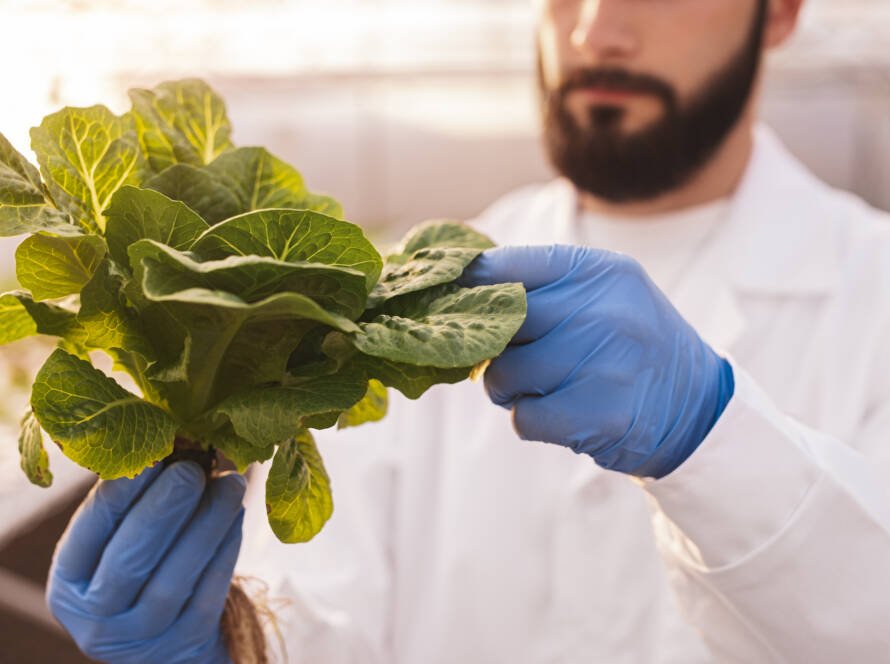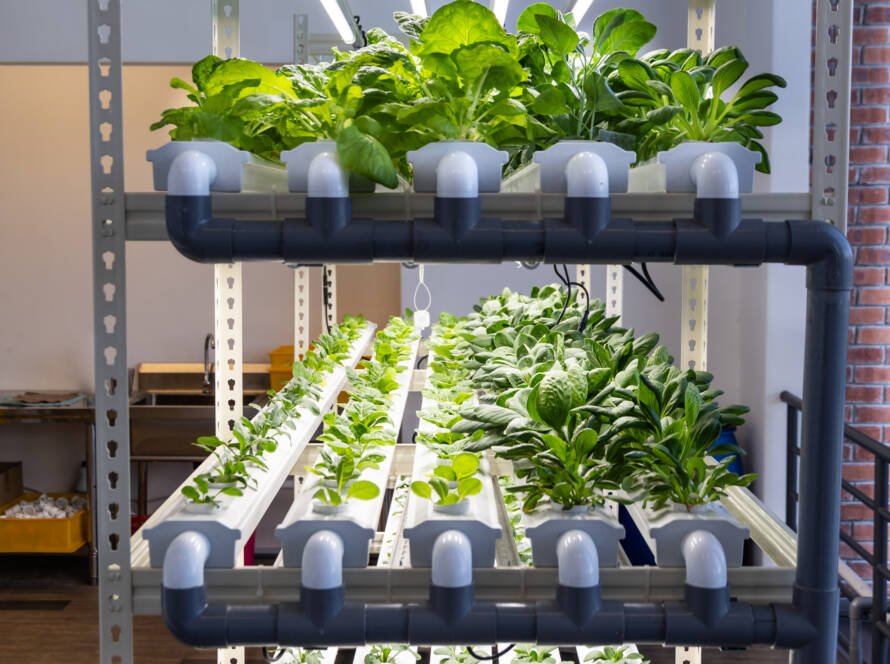Ebb and flow systems, also known as flood and drain systems, are one of the most popular and versatile hydroponic setups available. They offer a perfect blend of simplicity, efficiency, and scalability, making them ideal for both beginners and experienced growers. This guide explores the ins and outs of DIY ebb and flow systems, including their mechanics, benefits, and applications. We’ll also compare them to alternative hydroponic systems, discuss technical requirements, and address frequently asked questions. By the end of this article, you’ll have the knowledge and confidence to build your own system.
What is an Ebb and Flow System?
An ebb and flow system operates by periodically flooding the plant roots with nutrient-rich water and then draining it back into a reservoir. This cycle ensures plants receive an optimal balance of nutrients, water, and oxygen, which are all essential for healthy growth.
How It Works
- Flood Phase: A submersible pump activates, pushing nutrient solution from the reservoir into the grow tray. This completely submerges the plant roots, saturating them with nutrients.
- Drain Phase: After a set time, the pump turns off, and gravity pulls the nutrient solution back into the reservoir. The roots are then exposed to oxygen as they dry slightly, promoting aeration.
This process can be automated using a timer, making it highly efficient and low maintenance. The cyclical nature of the system mimics natural patterns, like rainfall, which plants have adapted to over time.
Applications of Ebb and Flow Systems
Home Gardening
For home gardeners, ebb and flow systems provide an opportunity to grow fresh produce, flowers, or even ornamental plants in a compact and controlled environment. Whether placed in a small corner of the kitchen or a dedicated grow tent, these systems offer a solution for year-round gardening, even in urban settings.
- Example: A home gardener in Chicago uses an ebb and flow system to grow lettuce and spinach on a balcony, harvesting fresh greens weekly.
Commercial Farming
On a larger scale, commercial farms use ebb and flow systems to grow high-demand crops like leafy greens and herbs. These systems are especially popular in greenhouses, where environmental conditions can be finely tuned for maximum productivity.
- Example: A hydroponic farm in California produces 1,000 pounds of basil monthly using a commercial ebb and flow setup. The farm uses 60% less water compared to traditional soil farming.
Benefits of Ebb and Flow Systems
1. Water Efficiency
Ebb and flow systems are closed-loop, meaning they recycle water rather than wasting it. This is a crucial advantage in regions where water conservation is important. Research indicates that hydroponic systems use 90-95% less water than soil-based methods, making them highly sustainable.
- Real-World Impact: In a study conducted by the University of Arizona, hydroponic lettuce grown in an ebb and flow system required only 2 liters of water per kilogram, compared to 15 liters in conventional farming.
2. Space Optimization
The compact design of ebb and flow systems allows growers to maximize space. Vertical stacking is a common technique that further increases the number of plants grown per square foot. A single 4×4 foot system can accommodate 25-40 plants, depending on the crop type.
3. Faster Growth Rates
Hydroponic crops typically grow faster due to direct and consistent nutrient delivery. For instance, lettuce in an ebb and flow system matures in 30 days, compared to 50-60 days in soil. This rapid turnover allows for multiple harvests throughout the year.
4. Versatility
Ebb and flow systems support a wide range of crops, from leafy greens to flowering plants. With slight modifications to nutrient concentrations, pH levels, and flood cycles, you can customize the system for different plants.
5. Cost-Effectiveness
DIY setups can be built with affordable materials such as storage bins, PVC pipes, and aquarium pumps. Even with these budget-friendly components, the system remains functional and productive.
6. Reduced Weeds and Pests
Since the system doesn’t use soil, weeds and soil-borne pests are virtually eliminated, reducing the need for pesticides and manual labor.
Drawbacks of Ebb and Flow Systems
While ebb and flow systems are highly efficient, they do have some limitations:
- Power Dependency: The system relies on electrical pumps and timers. Power outages can disrupt the nutrient cycle, potentially harming plants.
- Potential Root Rot: Improper drainage or overly frequent flooding can cause root rot, a common issue in poorly maintained systems.
- Initial Learning Curve: Beginners may find the setup process intimidating, especially when configuring timers, pumps, and tubing.
- Limited Crop Range: Root vegetables like carrots and potatoes are not well-suited for this system due to their growth habits.
DIY Ebb and Flow System: Step-by-Step Guide
Materials Needed
- Grow tray (e.g., a plastic storage bin or garden tray).
- Reservoir (e.g., a larger plastic tub to hold water).
- Submersible pump (available at garden or aquarium stores).
- Timer (to automate the pump).
- Tubing (for water flow).
- Growing medium (clay pebbles, perlite, or rock wool).
- Seedlings or plants.
- pH testing kit and nutrient solution.
Step-by-Step Instructions
- Assemble the Reservoir and Tray:
- Position the reservoir below the grow tray.
- Connect the pump to the reservoir and attach tubing to transport water to the grow tray.
- Install a Drain System:
- Drill a hole in the grow tray and insert a drain pipe to allow water to flow back into the reservoir.
- Prepare the Growing Medium:
- Fill the grow tray with a moisture-retaining medium like clay pebbles or perlite.
- Plant Seedlings:
- Place seedlings in the medium, ensuring the roots are secure but not buried too deeply.
- Program the Timer:
- Set the pump to flood the tray for 15-30 minutes, 2-4 times daily, depending on plant needs.
- Test the System:
- Run a test cycle to ensure proper flooding and draining.
Crop Selection for Ebb and Flow Systems
Best Crops to Grow
- Leafy Greens (Lettuce, Spinach, Kale):
- Thrive in consistent nutrient environments.
- Harvest in as little as 20-30 days.
- Herbs (Basil, Mint, Cilantro):
- Require minimal space and adapt well to hydroponics.
- Fruiting Plants (Tomatoes, Peppers, Strawberries):
- Perform well with additional support for vines and heavy fruits.
- Flowers (Orchids, Chrysanthemums):
- Benefit from precise watering and nutrient delivery.
Crops to Avoid
- Root vegetables (e.g., carrots, potatoes): Struggle due to their need for deep, loose soil.
Key Technical Requirements
1. Lighting
- LED Grow Lights: Offer energy efficiency and full-spectrum light.
- Commercial Options: High-pressure sodium (HPS) lights for large-scale operations.
2. Nutrients
- A balanced nutrient solution with nitrogen (N), phosphorus (P), and potassium (K) is essential.
- Include micronutrients like calcium, magnesium, and iron for optimal growth.
3. pH Levels
- Maintain a pH of 5.5 to 6.5 for most crops.
- Test and adjust regularly to avoid nutrient lockout.
4. Flooding Cycles
- Flood 2-4 times daily for 15-30 minutes.
- Monitor environmental conditions to adjust timing.
Ebb and Flow vs. Other Hydroponic Systems
| System | Advantages | Disadvantages |
|---|---|---|
| Ebb and Flow | Versatile, cost-effective, suitable for diverse crops. | Requires power, risk of root rot. |
| NFT (Nutrient Film) | Minimal water use, ideal for small plants. | Unsuitable for large or heavy crops. |
| Deep Water Culture | Continuous nutrient access, rapid growth. | Limited to certain crops, higher water use. |
| Drip System | Precision watering, customizable. | Requires more maintenance to prevent clogging. |
| Aeroponics | Maximum oxygenation, fastest growth rates. | Expensive setup, high technical demand. |
Frequently Asked Questions
Q1: How much does it cost to set up a DIY system?
DIY ebb and flow systems typically cost between $50 and $200, depending on materials.
Q2: How often should I change the nutrient solution?
Change the solution every 1-2 weeks to maintain nutrient balance.
Q3: Can I grow root vegetables in this system?
Root vegetables are not ideal due to their need for deep soil.
Q4: How can I prevent root rot?
Ensure proper drainage and avoid over-flooding the grow tray.
Q5: What’s the best crop for beginners?
Leafy greens like lettuce and spinach are easy to grow and forgiving for new hydroponic gardeners.
Conclusion
DIY ebb and flow systems are a versatile and efficient solution for growing plants hydroponically. Their water-saving capabilities, faster growth rates, and adaptability make them a favorite among hobbyists and professionals alike. With careful setup and maintenance, you can enjoy year-round harvests and contribute to sustainable gardening practices.


